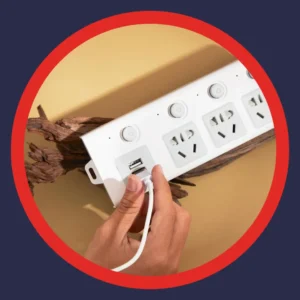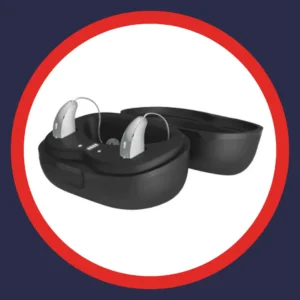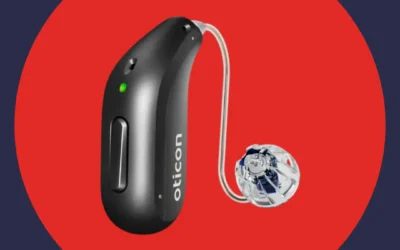A reliable hearing aid charger keeps your devices ready for every conversation, meeting, and moment. If you rely on rechargeable hearing aids, proper care of your hearing aid charger matters just as much as cleaning your devices. The complex batteries in your charger require delicate handling. From avoiding deep discharges to choosing the right outlet, small habits can make a big difference.
In this guide, we’ll break down five effective ways to take care of your hearing aid charger. Whether you’re a new hearing aid user or an experienced pro, you’ll find useful tips to keep your hearing aids working better, longer.
Find out more about the kind of hearing aid battery you should use.
1. Keep It Clean, Cool, and Dry
Your charger’s worst enemies? Moisture, grime, and heat.
Clean It Regularly
Dust and earwax can clog the charging ports. Wipe your charger with a soft, dry cloth weekly. Avoid water, solvents, or spray cleaners. Never submerge the charger or use damp wipes.
Avoid Moisture and Humidity
Store your charger in a dry location—like a dresser, not your bathroom. Moisture can corrode contacts and reduce performance.
Watch the Temperature
Extreme heat or cold harms electronics. Keep your charger in a room between 50°F and 90°F. Don’t leave it on a windowsill or in your car.
Bring It to Your Appointments
Your hearing care provider can inspect your charger and hearing aids during routine visits. They’ll check for wear, damage, or debris buildup.
Keeping your hearing aid charger clean and dry helps prevent charging problems and prolongs its life.

2. Use the Correct Charger and Cable
Yes, your charger matters. And yes, so does your charging cable.
Use What Came in the Box
Manufacturers design chargers specifically for their hearing aids. Use only the charger and cable that came with your devices. Others may lack voltage regulators, risking battery damage.
Plug Directly Into the Wall
Avoid USB ports, power strips, or extension cords. These can deliver unstable power that may harm your charger over time.
Be Gentle With Cords
Tugging on the cord? Not a good idea. Always grip the plug when disconnecting. Inspect your cable for frays or wear, and replace it through your hearing care provider if needed.
Traveling? Plan Ahead
Bring your original charger and cable with you. Consider a power bank if you’ll be away from outlets.
Using the correct charger and plug protects your hearing aid batteries and prevents charger malfunction.
Discover the top hearing aid accessories.
3. Follow Smart Charging Habits
Good charging habits make your hearing aids last longer—and keep them ready when you need them.
Charge Them Nightly
Most rechargeable hearing aids need 3–4 hours for a full charge. Charging overnight is ideal. Even if they’re not drained, it’s okay to top them off daily.
Don’t Let the Charger Die
If your charger has an internal battery, keep it charged too. Letting it go dead can reduce its capacity.
Avoid Deep Discharges
Don’t let your hearing aids or charger go completely dead. This shortens battery lifespan over time.
Don’t Store in an Unplugged Charger
Leaving hearing aids in a charger that isn’t plugged in drains the batteries slowly. Always ensure the charger has power.
Consistent charging habits support longer battery life and fewer surprises during your day.

4. Handle Everything With Care
Treat your charger like a valuable part of your hearing system—because it is.
Hold Aids by the Casing
When removing hearing aids from the charger, grip the casing—not the wire or receiver.
Check Charging Indicators
Most chargers use blinking or solid lights to show charge status. If no light appears, reposition your hearing aids or check your connections.
Avoid Rough Handling
Dropping your charger can damage the internal components. Keep it out of high-traffic areas where it might be knocked over.
Store It Safely
When not in use, place your charger in a secure, dry area. Avoid placing it near the edge of a table or anywhere it could fall.
A little care when handling your charger can prevent costly repairs or replacements.
Explore hearing aids with Bluetooth and noise-canceling.
5. Know When It’s Time for Maintenance or Replacement
Chargers, like batteries, don’t last forever. Regular checks help avoid future issues.
Inspect Weekly
Check the charging posts and cable ports for debris or wear. Clean gently with a dry cloth.
Replace Worn Accessories
If your charger or cable looks damaged, call your hearing care provider. Don’t wait for it to stop working.
Watch for Battery Decline
If your hearing aids stop holding a charge for a full day, the battery may need replacement. Lithium-ion batteries usually last 3–5 years.
Consult Your Hearing Care Provider
Bring your charger and hearing aids to appointments. They’ll test functionality and help with any performance concerns.
Proactive maintenance keeps your charger—and hearing aids—working reliably every day.
Understand more about hearing aid fitting.

Why Hearing Aid Charger Care Matters
Your charger is the heart of your hearing aid’s power system. Without proper care, you risk performance issues, battery degradation, or unexpected failures.
Following these simple steps extends the life of your rechargeable hearing aids, protects your investment, and keeps your world sounding crystal clear.
Need Help With Your Hearing Aid Charger?
American Hearing + Audiology is here to support you every step of the way. Whether you need a new charger, a replacement cable, or help with battery issues, we’ve got you covered.
Contact American Hearing today to schedule a checkup, ask questions, or get expert guidance. Our hearing care providers offer personalized support tailored to your hearing technology.



